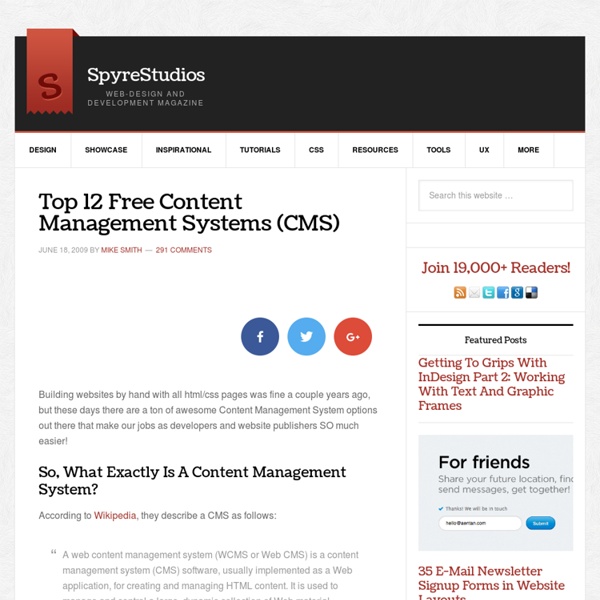Top 12 Free Content Management Systems (CMS)

IZISPOT™ - Logiciel pour créer un site Internet ou votre blog simplement et gratuitement
Joomla.fr - Joomla!fr Le portail des Utilisateurs Francophone de Joomla
Comparatif CMS | Comparatif CMS
Ce tableau comparatif des CMS vous est proposé par Codeur. Trouvez des prestataires webmaster pour installer ou configurer votre cms et visualisez les demande de devis d’installation de cms de client sur Codeur.com
Related:
Related:



